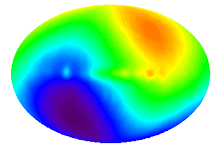Osmolarity and tonicity
Osmolarity is the measure of the concentration of a solute in a solution. It is determined by the number of moles of solute particles in a given volume of fluid. Urea is a single solute. If add 10 mM urea is added to a 100 mOsM solution in a beaker, then the solution gains 10 mOsM. Please note that this question did not ask you to compare the solution to a cell.
In contrast, tonicity is a comparative term. To calculate tonicity, then then you must compare the solution to another compartment such as a cell. If you are to compare the solution to a cell then the osmolarity of the cell will be given to you. Urea does pass across the plasma membrane of all cells to equilibrate and therefore does affect the movement of water. A cell with a cytoplasm of 300 mOsM, does not shrink in a solution that is 300 mOsM NaCl nor does it shrink in a solution that has 10 mOsM urea added to it. All cells are permeable to urea.
In the medulla of the kidney there is a standing osmotic gradient of 300 mOsM to 1200 mOsM. Half of this gradient is due to urea. In this region of the kidney, the cells of the tubules and collecting duct do have transporters for urea. Red blood cells also have transporters for urea. The transporter is needed to increase the speed at which urea equilibrates across the plasma membrane of these cells. This prevents the epithelial cells from excessive shrinking due to the loss of water to the interstitial space. In addition the transporters in the collecting duct are used to remove urea from the urine and to replenish the urea in the gradient.
Water can pass across the plasma membrane in the absence of aquaporin but the transit is slow. Almost all cells of the body have aquaporin channels inserted into their plasma membranes. This means that water equilibrates essentially instantaneously across the cell membrane. Water moves in response to a gradient. The process is called osmosis.

沒有留言:
張貼留言